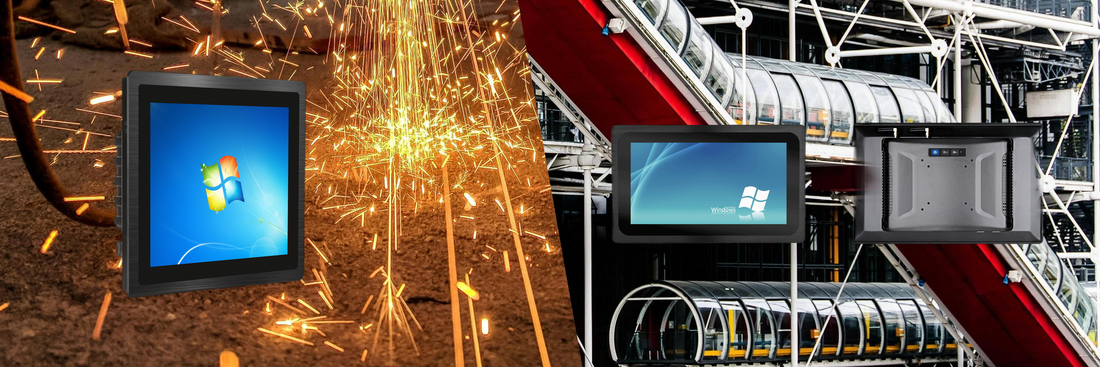
Top 10 Critical Hardware Components for Optimized Edge Computing
Top 10 Critical Hardware Components for Optimized Edge Computing
In the fast-evolving world of digital transformation, edge computing is rapidly gaining importance due to the sheer volume of data generated by IoT (Internet of Things) and IIoT (Industrial Internet of Things) devices. These interconnected devices are producing enormous data streams that demand swift processing close to the data source—what's known as edge computing. By processing data locally, edge computing reduces the need for large amounts of data to be transmitted back and forth between centralized cloud servers, saving time and bandwidth.
But implementing a successful edge computing infrastructure requires a particular set of computer hardware components. Below, we dive into the 10 essential hardware needs for robust and reliable edge computing systems.
- Rugged, Fanless Design for Harsh Environments
Edge computing systems are often deployed in unpredictable and harsh environments, such as oil fields, remote manufacturing sites, and outdoor installations. Therefore, rugged hardware with a fanless design is crucial. A fanless system, with a sealed enclosure, prevents dust, debris, and moisture from entering the system. This design enhances durability and reduces the risk of component failure.
Unlike traditional desktop systems that require fans for cooling, fanless edge computers leverage advanced thermal management solutions. These systems operate within a wide temperature range, from as low as -40°C to as high as 85°C, making them suitable for diverse environmental conditions.
Moreover, rugged edge computers are designed to handle extreme shock and vibration. By eliminating cables and other moving parts, they achieve greater reliability, preventing mechanical failures common in traditional systems. Without fans and cables, there's also reduced wear and tear, prolonging the life of the hardware.
- High-Performance Processors
At the core of every edge computing solution lies a processor that must meet the specific workload demands of its deployment. The right processor architecture will differ depending on the intended task—whether it is a low-power IoT gateway or a compute-intensive AI workload.
System-on-Chip (SoC) solutions, which integrate a processor, memory, and storage on a single chip, are efficient for lightweight tasks, such as collecting sensor data or simple real-time monitoring. However, for more demanding industrial applications, socket-based processors with higher core counts and higher clock speeds provide the necessary computational power to handle complex tasks like machine learning or high-speed automation.
Choosing the right processor is essential because slower processors can cause bottlenecks, delaying data processing and reducing overall system efficiency. Therefore, the selection of processors—whether low-powered ones or higher-performance multi-core CPUs—should align closely with the specific performance needs.
- Compact Form Factor and Versatile Mounting Options
Space is often at a premium in industrial environments. Therefore, edge computers need to be compact and equipped with versatile mounting options to fit into tight spaces, such as small cabinets, control rooms, or directly on machines.
Mounting options include:
- Wall and ceiling mounts
- DIN rail mounts for industrial settings
- VESA mounts for attachment to displays or monitors
This flexibility ensures that edge systems can be deployed efficiently in diverse environments without occupying much physical space.
- Reliable and High-Capacity Storage
Since edge computers collect, store, and process vast amounts of data locally, they need reliable and fast storage solutions. Solid-state drives (SSDs) are the preferred choice for rugged edge computing environments due to their durability, faster read/write speeds, and shock resistance compared to traditional hard drives (HDDs).
SSDs store data on non-volatile NAND chips, making them more resilient to physical shocks and vibrations, essential in industrial settings. Moreover, enterprise-grade SSDs can hold multiple terabytes of data, making them ideal for tasks that require large data storage at high speeds.
- Rich I/O Capabilities for Device Connectivity
One of the defining characteristics of edge computing is the necessity to connect with a wide range of industrial devices, sensors, and machinery, including legacy equipment that still plays a role in industrial processes. Therefore, edge computers must come equipped with a variety of input/output (I/O) ports such as:
- USB
- Ethernet (RJ45/M12)
- COM ports
- General Purpose I/O (GPIO)
GPIO ports are particularly valuable as they provide connectivity to various peripherals and legacy devices, ensuring seamless integration across diverse industrial ecosystems.
- Wired and Wireless Connectivity for Remote Operations
Edge computers need robust connectivity options to interface with networks and transmit data when needed. Wired connections, such as Ethernet, are commonly used for high-speed, stable communication. Edge computers often support speeds from 1 GbE to 10 GbE or higher, depending on data transfer needs.
For deployments in remote locations where wired networks aren’t feasible, wireless and cellular connectivity is essential. Edge systems now come equipped with advanced wireless communication standards like Wi-Fi 6 (IEEE 802.11ax), 4G, LTE, and 5G for cellular communication. These wireless solutions ensure consistent data transfer, even in locations without a reliable wired infrastructure.
- Wide Power Input Range and Protection Features
Edge devices must be able to operate in environments where power input can fluctuate. To accommodate different power conditions, edge computing hardware supports a wide voltage range (from 9V to 50V DC) to handle varying power inputs. This feature ensures that edge devices can function reliably in different deployment settings, such as manufacturing plants or outdoor locations with unstable power sources.
Additionally, built-in power protection features, including overvoltage protection and surge protection, safeguard the systems from electrical damage, enhancing their reliability and longevity.
- Built-in Security Features
Since edge computing devices are often placed in remote or unmonitored areas, security is critical. Hardware-level security features like Trusted Platform Module (TPM) 2.0, which provides cryptographic keys to secure the device, protect edge systems from tampering and unauthorized access. These security measures reduce the risk of data breaches and ensure that edge systems can perform their tasks securely, even in the field.
- Performance Accelerators for Real-Time Data Processing
For certain edge applications, the sheer volume and complexity of data processing require more than just a CPU. Additional accelerators, such as Graphics Processing Units (GPUs), Vision Processing Units (VPUs), or Field-Programmable Gate Arrays (FPGAs), enhance real-time data processing capabilities.
- GPUs: Accelerate machine learning and AI tasks by processing large amounts of data in parallel.
- VPUs: Handle image and video processing tasks efficiently while consuming less power.
- FPGAs: Offer customized, optimized processing for specific workloads, such as real-time data analytics.
These performance accelerators are especially important in applications like AI, machine vision, and other complex tasks that require immediate data processing and decision-making at the edge.
- Certification for Cloud Integration
Finally, edge computers must have certification for cloud services like Amazon Web Services (AWS) IoT Greengrass and Microsoft Azure IoT. Certification ensures that edge systems can seamlessly transfer telemetry data to the cloud for further analysis, storage, and remote monitoring. Such certifications reassure businesses that their edge systems will work smoothly within existing cloud infrastructures, optimizing their data management strategies.
To successfully deploy and manage edge computing systems, companies need hardware solutions that combine durability, performance, and connectivity. By ensuring these 10 essential hardware components are integrated into their edge systems, organizations can efficiently handle the increasing demands of IoT and IIoT environments.
For tailored edge computing solutions and to learn how the latest hardware advancements can support your organization, visit IMDTouch.com or reach out via email at support@IMDTouch.com.
